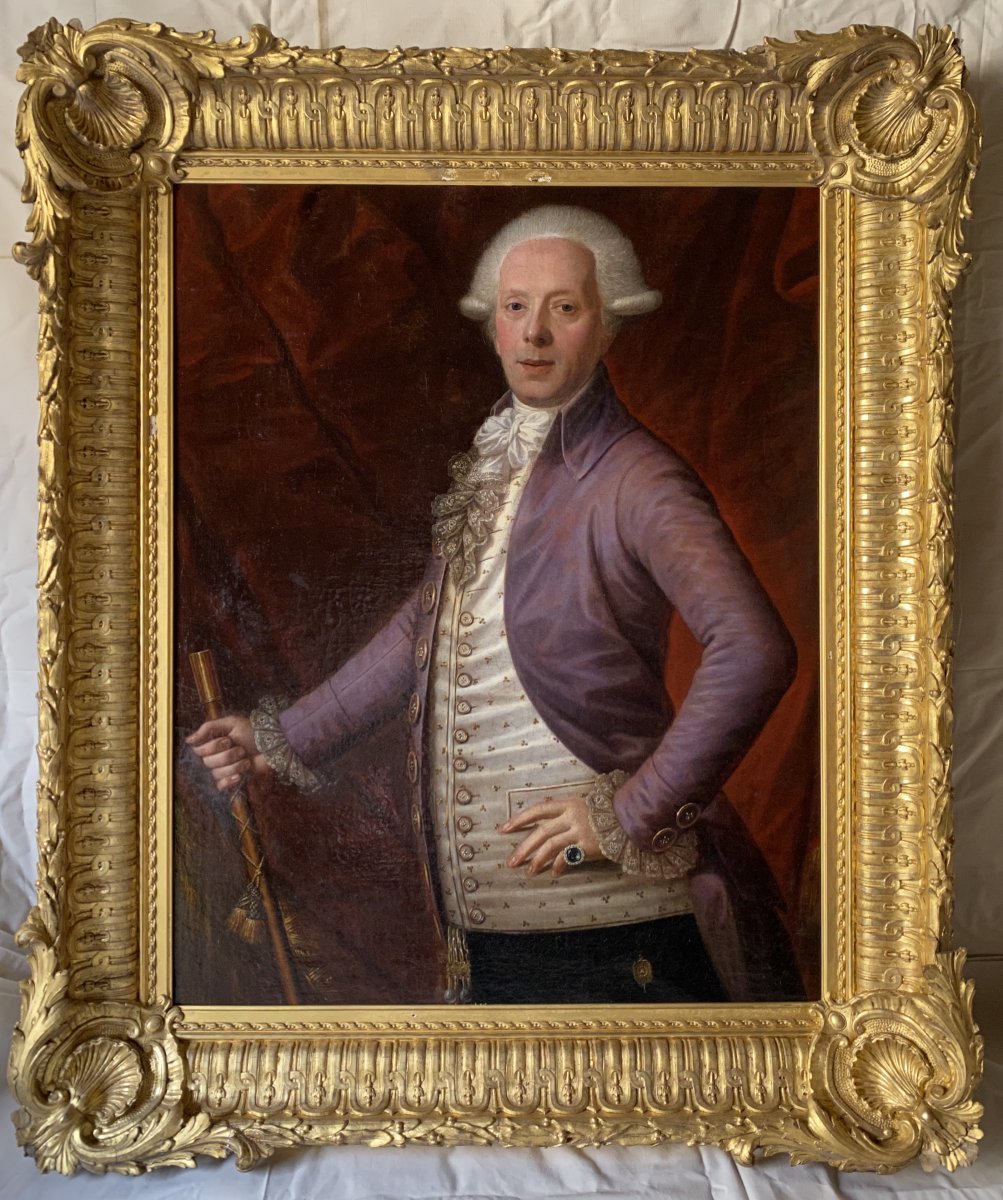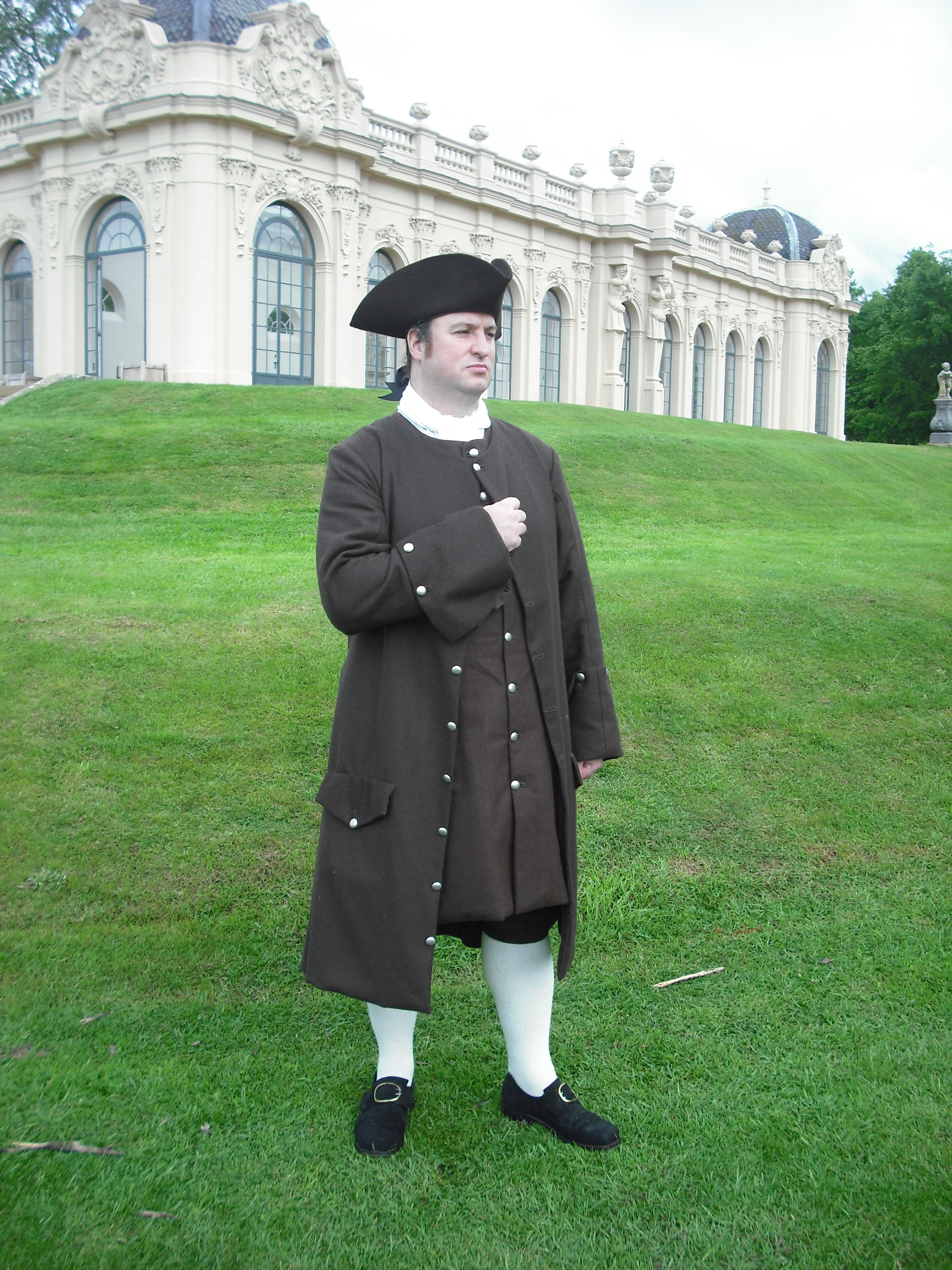
Sold Price British School, 18th Century, Portrait of a Gentleman in a Blue Jacket, Oil on
Let us turn to our 19th-century forebears for some lessons on courtesy from the Gentleman's Book of Etiquette and Manual of Politeness, by Cecil B. Hartley, 1860. The Victorians loved to call on history for their inspiration, and so too can we—there is much to learn from them. Here are 10 simple rules that 19th-century gentlemen lived by. 1.

British School, 18th Century Portrait of a Gentleman with Flintlock Gun, After the Hunt, Three
gentleman, in English history, a man entitled to bear arms but not included in the nobility.In its original and strict sense the term denoted a man of good family, deriving from the Latin word gentilis and invariably translated in English-Latin documents as generosus.. For most of the Middle Ages, when the basic social distinction was between nobiles (the tenants in chivalry, whether earls.
.jpg)
English School, early 18th Century , Portrait of a gentleman, halflength, in a blue coat and
For a few years in the early 18th century, from about 1715 to 1720, piracy experienced a golden age.. Whatever his motives for becoming the Gentleman Pirate, Stede Bonnet's name would not live.

(c 1790) Hugh Douglas Hamilton Portrait of a Young Gentleman in Rome 18th century fashion
There were however three areas of the life of the 17th- and 18th-century gentleman where the idea of fairness was widely considered relevant: fox-hunting, horse-racing, and duelling. We will look at each of these in turn with a view to considering whether they add up to anything like a distinctive aristocratic tradition of fair play.

Portrait Of A Gentleman, 18th Century Work. Portrait Colorful portrait, Portrait, 18th century
A gentleman gets dressed in the fashion of 18th century. He puts on his clothes, with help in a particular order, including a full shirt with voluminous slee.

Portrait Of A Gentleman, 18th Century Work.
The eighteenth-century Gentleman's House: Five Favorites. April 7, 2016. Royal Oak member, Stephen Hague has shared with us his favorite British 'gentlemen houses.'. An expert on the topic, Dr. Hague teaches a wide range of courses in Modern European history, with a special interest in Britain and the British Empire in a global.

Sold Price PROBABLY SWITZERLAND, 18TH CENTURY September 3, 0117 330 PM CEST
Typical dress for the 18th-century gentleman was a three-piece suit, which consisted of breeches and a dress-coat worn over a sleeveless waist-coat or vest. With their sequins, tassels and glitzy.

18th Century Portrait Of A Gentleman 698339 Sellingantiques.co.uk
A gentleman ( Old French: gentilz hom, gentle + man; abbreviated gent.) is any man of good and courteous conduct. [1] Originally, gentleman was the lowest rank of the landed gentry of England, ranking below an esquire and above a yeoman; by definition, the rank of gentleman comprised the younger sons of the younger sons of peers, and the.

Lot 18th Century Portrait Of Gentleman
An 18th-century 'fop', originally meaning a fool, came to represent the effeminate man who emulated women. Their epicenity could be total, from clothing to conversation and intonation.. Polite Gentlemen used enlightenment language to justify sexual curiosity. Hellfire Clubs were the most infamous ostensibly polite clubs, known for their.

Pin on Portrait — Gentleman 18th century
Gentlemen's Fashion in the 18th Century. Though clothing for an 18 th century gentleman was less cumbersome than it was for women, getting dressed was more complicated than slipping on slacks and a dress shirt. Like their female counterparts, 18 th century men didn't bother much with basic undergarments. Though underbreeches existed, most.

18th century Guillaume Voiriot Portrait of a gentleman with a violin 18th century, 18th
18th century men's attire was the habit à la française, which consisted of a jacket, breeches and a vest. This costume varied in material and design according to the social status of its owner. Up until the middle of the century the jacket, called justeaucorps, was worked to be collarless and cling down to the waist.

Pin by Niels on Historic costume Portrait, Portrait painting, 18th century paintings
The Lloyds typified the elite landed gentry class in the 18th century in the U.S., but with the arrival of the bustling, noisy, increasingly industrialized United States of the 19th century and its crop of self-made men, some of the rags to riches variety greatly broadened who a gentleman was and what books were on his (or her) shelves.

Lot English School, (18th century), Portrait of a gentleman in blue jacket, oil on canvas, 30
GENTLEMAN. GENTLEMAN. The word "gentle" is derived from the Latin word gentilis, an adjective meaning 'of or belonging to the same clan, stock, or race'. Throughout the early modern era noble birth would largely define the gentleman, but the ideal of gentlemanly behavior changed dramatically from the sixteenth through the eighteenth centuries.

18th century portraits, Portrait, Gentleman
In United Kingdom: Economy and society.the population: the landed country gentlemen and their socially inferior cousins, the merchants and lawyers. By 1500 the essential economic basis for the landed country gentleman's future political and social ascendancy was being formed: the 15th-century knight of the shire was changing from a desperate and irresponsible land proprietor, ready…

Frock Coats at Cloak’d and Dagger’d
The most successful French general of the mid-18th century, Maurice de Saxe (1696-1750), was an illegitimate son of Frederick Augustus I, Elector of Saxony. Maurice began his military career at age 12 in the army of none other than Prince Eugene, fighting the French in 1709 at Tournai, Mons and Malplaquet.

Sir Nathaniel DanceHolland RA Portrait of a Gentleman Portrait, Male portrait, 18th
The Life and Opinions of Tristram Shandy, Gentleman, also known as Tristram Shandy,. Sterne's widely publicised 27 July 1766 response to Sancho's letter became an integral part of 18th-century abolitionist literature. There is a strange coincidence, Sancho, in the little events (as well as in the great ones) of this world: for I had been.